Looking for a way to give your feline friend some climbing space while also saving floorspace in your home? Consider building your own wall-mounted cat tree! With just a few affordable materials and essential tools, you can create a customized cat tree that meets both your cat’s needs and your home’s decor. Our step-by-step guide includes detailed instructions for measuring and cutting the materials, securing the tree to the wall, and ensuring stability and safety. We also offer suggestions for customizing the tree with additional features and personal touches, as well as advice for maintaining and caring for it over time. So why not give your cat the gift of vertical space with a DIY wall-mounted cat tree?
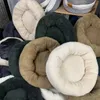
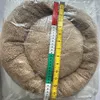
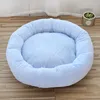

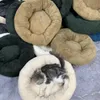
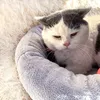
Materials and tools needed
For cat lovers, having a wall-mounted cat tree is an excellent way to provide their feline companions with the much-needed exercise and entertainment. These cat trees not only keep your cats active but also save you space in your home by mounting on walls.
In this article, we’ll go over a list of affordable materials and essential tools required for assembly to help you build your own wall-mounted cat tree.
Materials:
1. Wood planks – You’ll need wood planks of varying lengths and thicknesses to construct the platforms, steps, and perches for your cat tree. While pine and plywood are commonly used, hardwoods such as oak or maple will last longer.
2. Carpet or sisal rope – To provide traction and make the surfaces more comfortable for your cats, you’ll need carpet or sisal rope to cover the wood planks.
3. Screws and nails – You’ll need screws and nails to fasten the wood planks together.
4. L-brackets – L-brackets are used to attach the cat tree to the wall.
5. Optional accessories – You can add accessories such as scratching posts, toys, and hammocks for your cat’s amusement.
Where to Purchase Materials:
Most hardware stores should carry the materials you need, including Home Depot and Lowe’s. Online retailers such as Amazon also offer a wide selection of materials.
Tools:
1. Drill – A drill is needed to make holes for screws and nails.
2. Saw – A saw is necessary to cut the wood planks to size.
3. Staple gun – A staple gun is used to secure the carpet or sisal rope to the wood planks.
4. Tape measure – A tape measure is needed to ensure accurate measurements.
5. Optional tools – A jigsaw may be needed to create curved platforms or perches, while a router can be used to create decorative edges.
Step-by-step construction guide
A. Detailed instructions for measuring and cutting the materials
Before you begin constructing your wall-mounted cat tree, it’s essential to gather all the necessary materials and tools. You will need a sturdy wooden plank for the base, as well as several smaller planks or shelves for the climbing platforms. Additionally, you will need brackets, screws, a drill, a saw, and carpet or sisal rope to cover the surfaces for your cat’s comfort.
Start by measuring and cutting the wooden planks to the desired size using a saw. The base plank should be large enough to provide a stable foundation for the cat tree, while the climbing platforms can be smaller but should still offer enough space for your cat to comfortably perch and play.
B. Assembly process for securing the cat tree to the wall
Once you have cut the wooden planks to size, it’s time to assemble the cat tree. Begin by attaching the climbing platforms to the base plank using brackets and screws. Make sure to space them apart evenly to allow your cat to move freely between them. Next, attach brackets to the back of the base plank and secure them to the wall using screws. It’s important to choose a sturdy and stable wall surface to ensure that the cat tree can support your cat’s weight without wobbling or coming loose.
C. Tips for ensuring stability and safety
When constructing a wall-mounted cat tree, it’s crucial to prioritize stability and safety. To prevent accidents, make sure to secure the cat tree to the wall using heavy-duty screws and brackets. Additionally, consider adding extra support, such as L-brackets or braces, to reinforce the structure. Covering the wooden surfaces with carpet or sisal rope not only provides a comfortable and soft texture for your cat but also enhances grip and stability.
To further ensure your cat’s safety, regularly inspect the cat tree for any signs of wear and tear, such as loose screws or frayed carpet. It’s also a good idea to periodically check the wall mounts to make sure they are still securely attached. By following these tips, you can create a safe and stable wall-mounted cat tree that your feline friend will love to climb and explore.
Customization options
Adding Platforms and Scratching Posts
One of the great things about wall mounted cat trees is that you can easily add or remove platforms and scratching posts as needed. If you have multiple cats, consider adding more platforms at different heights to give them plenty of space to rest and play. You can also add scratching posts in different locations to encourage your cats to scratch where you want them to.
When adding platforms and scratching posts, think about the material you want to use. Carpeted platforms and scratching posts are cozy and provide traction for cats to climb and scratch, while sisal rope scratching posts are durable and help keep cats’ claws healthy. You can even mix and match materials for a unique look.
Incorporating Different Colors and Textures
If you’re looking to match your wall mounted cat tree to your home decor, consider incorporating different colors and textures. You can add fabric or carpet in different colors and patterns to match your furniture or curtains. For a more natural look, consider using wood or bamboo platforms and scratching posts.
When it comes to colors and textures, don’t be afraid to mix and match. A variety of textures can add visual interest to your cat tree, while a cohesive color scheme can tie everything together.
Personalizing the Cat Tree for Your Cat
Finally, when customizing your wall mounted cat tree, don’t forget to personalize it for your cat. Consider adding a cozy hideaway for shy cats or a hammock for lounging. You can even add toys or a laser pointer to keep your cat entertained.
When personalizing your cat tree, think about your cat’s habits and preferences. Does your cat love to climb? Add more platforms. Does your cat prefer to scratch on angled surfaces? Add a scratching post at an angle.
Maintenance and care
Firstly, it’s important to regularly clean your cat tree. This will not only help to remove any dirt and debris from the surface but also prevent any unpleasant smells from developing. Start by vacuuming or brushing off any loose fur, dust or litter from the tree. Next, wipe down the surfaces with a damp cloth or sponge, using mild soap if necessary. Be sure to avoid using harsh chemicals or abrasive materials that could damage the tree’s finish.
In addition to cleaning, it’s important to keep an eye on the condition of the tree itself. Check for any signs of wear and tear, such as frayed ropes or loose screws. If you notice any damage, it’s best to address it immediately to prevent any further harm. You can repair minor issues yourself with replacement parts or tools, or seek professional help if needed.
To ensure the longevity of your wall-mounted cat tree, consider investing in high-quality materials. Look for products made from sturdy materials like wood or metal, which can withstand your pet’s natural scratching behaviors. Likewise, opt for materials that are easy to clean, such as removable and washable fabrics.
Finally, it’s always good to be prepared in case your cat tree requires replacement parts. Many manufacturers offer replacement components for their products, such as replacement platforms or scratching posts. It’s also possible to find third-party replacement parts online, so be sure to do your research beforehand.
In conclusion, maintaining and caring for your wall-mounted cat tree is essential for both your cat’s enjoyment and safety. By following these tips, you can ensure that your cat’s favorite spot remains in great condition for years to come.
FAQ
Q1) What materials do I need to build a wall-mounted cat tree?
– You will need wood planks (2×4 or 2×6), brackets for mounting, screws, a drill, and various materials for covering the platforms such as carpet or sisal rope.
Q2) Do I need to have any special skills or tools to build a wall-mounted cat tree?
– While it is helpful to have some basic woodworking skills and access to power tools, this DIY project can be completed by beginners. It is important to measure and plan carefully before beginning construction.
Q3) How much does it cost to build a wall-mounted cat tree?
– The cost will depend on the size of the tree and the materials used, but it can be significantly cheaper than buying a pre-made cat tree from a store. A small to medium-sized cat tree can cost anywhere from $50-$150 to build.
Q4) Can a wall-mounted cat tree support the weight of multiple cats?
– Yes, if constructed properly with sturdy materials and mounted securely into the wall, a wall-mounted cat tree can support the weight of multiple cats. It is important to regularly check the stability of the tree and make any necessary repairs or adjustments.

